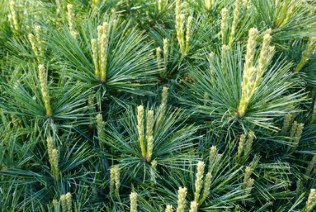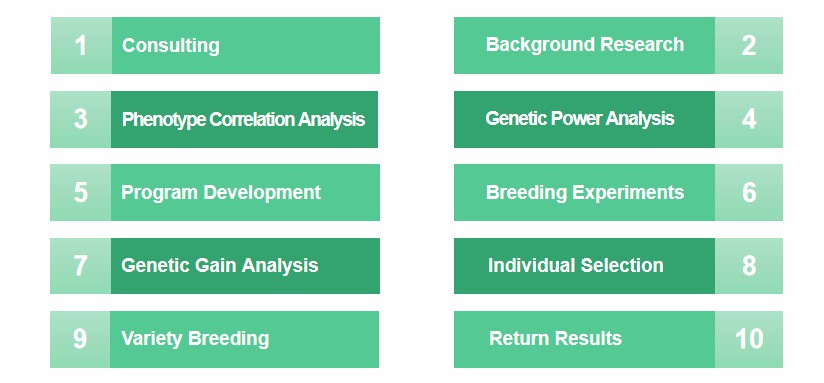
Eastern white pine (Pinus strobus, P. strobus) is a monoecious plant in which pollen from the stamens or male cones pollinates the female cones or pistillate cones in spring. The wood of P. strobus is well suited for cladding, lathing, moldings, and furniture.
Given its excellent properties, P. strobus has been introduced into cultivation worldwide and has wide genetic variability and high productivity in plantations in North America, Europe, and the Far East. In recent years, P. strobus has been attacked by white pine blister rust and the white pine weevil from time to time, which has seriously affected its survival rate. Breeding effectively improves disease resistance and increases biodiversity, which is very important for P. strobus.
Lifeasible, a leading plant biotechnology company with deep insights into plant breeding, has provided Pinus strobus breeding services worldwide to meet our customers' needs for improving P. strobus resistance and timber.
In response to the increasing damage to P. strobus from white pine blister rust, breeding programs are already underway to produce partially resistant types on a large scale. Lifeasible can tailor Pinus strobus breeding service programs to meet our customers' objectives and the growing needs of our customers for resistant planting stock.
Our client's breeding program for resistance to white pine blister rust is to integrate multiple breeding strategies based on this resistance trait to increase genetic gain and thereby improve the profitability of P. strobus plantations. Our service will begin with an analysis of gene gain, non-additive and additive genetic variance, general and specific fitness, and narrow genetic power for the trait. Hybrid breeding and genetic engineering breeding are the techniques we often use.
Selection of hybrid parent species. Understanding the taxonomic system and kinship of P. strobus is of great practical value and guidance for studying interspecific hybridization and hybrid identification of P. strobus. P. strobus, with the phenotype of resistance to white pine blister rust, was selected as the hybrid parent.
Flowering phenology. Flowering weather observation, accurate grasp of the flowering period of the hybrid parents, losing no time to collect pollen, and timely artificial pollination, is an integral parts of hybrid breeding.
Pollen storage. The length of pollen life and the success or failure of pollen storage are essential for hybrid breeding tree species with unpredictable flowering periods.
They artificially pollinated. P. strobus is monoecious and has a certain degree of self-fertilization ability. Therefore, pollinated flower buds should be de-sexed and bagged for isolation to prevent self-fertilization and invasion of foreign pollen. Hybrid determination and growth difference analysis. Differences in resistance to white pine blister rust, tree height, diameter, growth reading, etc., were analyzed between hybrids to select plants with superior shapes.
Gene detection for resistance to white pine blister rust. We first screened P. strobus for resistance to white pine blister rust, examined its genomic information, and found the genes related to this resistance by analyzing and comparing it with existing articles. Then we extracted the target gene, loaded it into a vector, introduced it into the recipient cells for expression, and screened the new varieties to meet the requirements.

Lifeasible, a biotechnology company with extensive breeding experience and talented scientists, has been working to shorten breeding cycles and deliver genetic gains in new germplasm to market faster. We have dedicated staff to work on your project, updating you on your research progress in real-time. If you have any questions, inquiries, or doubts about our Pinus strobus breeding service, please contact us directly.
Reference